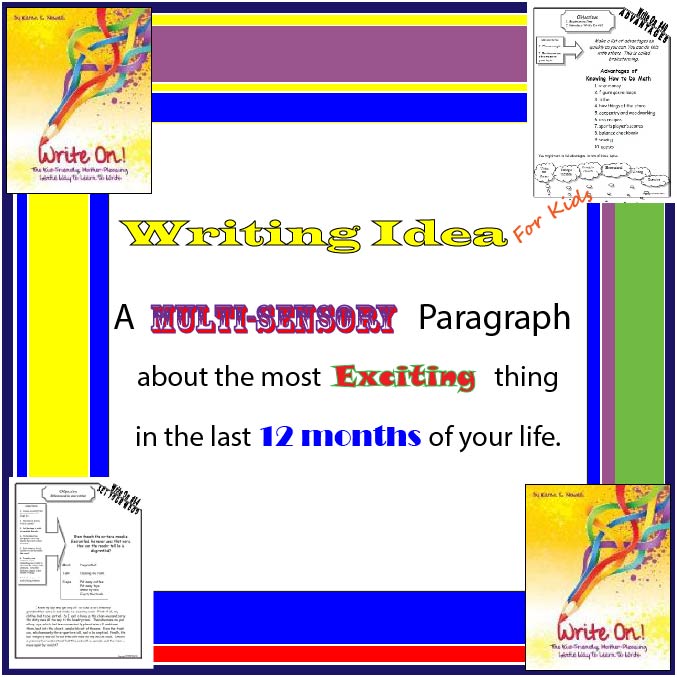Writing Lessons
10 tips to make your writing lessons more effective.

10 Teaching Tips for Writing
Writing is often considered the cornerstone of the educational process. That is why many colleges and employers want to see a written essay before making their decision on a candidate.But don't be intimidated by teaching writing. Like speech and thinking, writing is a process that will be developed with time and practice. And here are ten valuable tips to help you gain confidence as a writing guide for your student.
Writing Guidelines
#1 - Set Realistic Expectations for Writing Assignments
![]()
Here are some very general guidelines on length of typical writing assignments:
- End of Kindergarten - 2 sentences
- End of 1st Grade - 4 sentences
- End of 2nd Grade - 6 sentences
- End of 3rd Grade - 3 paragraphs
- End of 4th Grade - 4 paragraphs
- End of 5th Grade - 5 paragraphs
- Sentence Development - Kindergarten through 2nd grade
- Paragraph Development - 3rd through 5th grade
- Essays and Reports - 6th through 8th grade
- Essays with a Thesis - 9th grade through college
Writing Prompts
Tip #2 - Use Writing Prompts that Motivate them to Write
![]()
The best writing prompts are the ideas, events, and objects that the writer is interested in.
Writing Process
Tip #3 - Outline the writing process to be used by students at different age levels
![]()
The writing process is a step-by-step plan which outlines for your student what they need to do to complete their writing lessons. Ugh! Self-editing included.
So how does this work for you?
If you just tell your student to sit down and write, you are likely to get some blank stares.
Instead, start with the students' experience. In some cases, they may chose an event or experience to write about. Or, create an experience to write about.
Read about the writing process from start to finish.
Creative Writing
Tip #4 - Use a CREATIVE Creative Writing Course
![]()
In a nutshell, have the student complete a specific writing lesson about a topic of their interest. Plan and discuss it first, then have them write it.
Finally, they think about how that writing skill helped them to express more about their topic. This helps them incorporate that skill into their own repertoire of writing tools.
Six Traits Writing
Tip #5 - Incorporate 6+1 Traits Writing in Your Writing Lessons
![]()
There are seven specific traits that teachers helps students focus on. During their writing lessons, the student improves one or two of the seven areas.
You can read more about the six traits writing.
In short, the seven traits are:
- Ideas
- Organization
- Voice
- Word choice
- Sentence fluency
- Conventions
- Presentation
Written Presentations
Tip #6 - Plan the Final and Exciting Written Presentation
![]()
Check the check list to make sure everything is ready. Also, consider other creative ways to present the work besides a printed paper.
What kinds of written presentations can be used with your writing lessons? How about a scroll? A poster presentation? A powerpoint?
The more exciting the presentation, the more energy he or she will put into completing the writing lessons.
Writing Curriculum
Tip #7 - Choose a Writing Curriculum that Meets Your Needs
![]()
However, it can be useful to have a writing curriculum that guides you through the process. And there are a number of options available.
We have developed Write On: The Kid Friendly Mother Pleasing Gentle Way to Learn to Write as a homeschool writing curriculum for multi-grade teaching.
It is a cookbook of writing lessons that gently takes the student from sentences, to paragraphs, to essays, and to developing a thesis.
Writing Rubrics
Tip #8 - Use a Writing Rubric to Help Students Improve Their Writing
![]()
We have developed different writing rubrics that you can download for FREE.
The writing rubrics list specific guidelines and traits for the writing assignment. It is most effective if your student can see the rubric before they write their paper.
Book Report Template
Tip #9 - Effective Book Reports can Stimulate Writing - Sometimes
![]()
Not sure about you, but I don't have much desire to torture my kids that way, do you?
Want to learn two little secrets about how to use book reports effectively as a written assignment? Well, maybe it is a little too obvious.
- The report should be on a book they like. I'm going to take it for granted that this is obvious to you.
- Use classic literature for the basis of the report.
Simply put, classical literature contains the kinds of stories that have something WORTH writing about.
Use can use our book report template to help your students write a book report someone would want to write - and even read.
Summer Vacation Essay
Tip #10 - Five Different Ways to Have Fun Writing About Summer Vacation
![]()
Help My Students in High School
Tip #11 - Get Ready for High School and Beyond
![]()
Soon those chubby little hands that could barely hold a pencil are writing a thesis on their lap top.
High school is a time when the writing process becomes a mastered skill for many students. Here are four tips for high school writing and beyond.
About Our Site
Hands-On Learning













